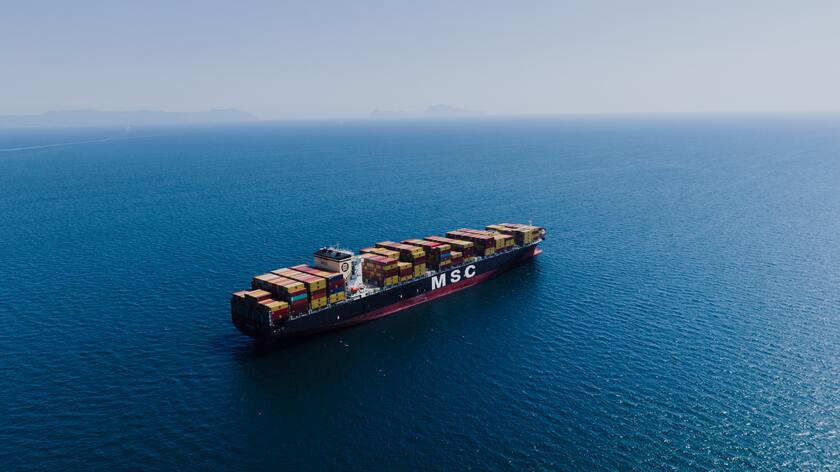The most used way to transport goods, especially in large quantities, has its peculiarities in terms of size and cargo: discover all the dimensions of a sea container, as well as the ISO standard applicable to these containers.
What are the dimensions of a sea container?
During the last century, the idea emerged to design containers with the same dimensions, even between different means of transport, in order to streamline and simplify the logistics process of trade, loading and transportation.
The initiative began at the Port of Newark, New Jersey, where an entrepreneur loaded 58 metal boxes, or containers, of the same dimensions directly from road trailers onto the cargo ship, marking a milestone in the standardization of shipping containers.
After that, this initiative was progressively incorporated into transport, until today it is fully standardized under the ISO standard for maritime containers.
Currently there are many types of containers, as you will see below, however, each one has its own specific uses and we must choose the one that best suits our needs, from the type and size of the pallet to the type and size of the pallet.
type and size of the pallet
to the type of goods to be transported.
ISO standard for sea containers
| Container | Size | Uses and Advantages | Disadvantages |
| Standard | 20 ft | Goods without the need for temperature or shape More standardized and economical for palletized loads |
Little flexibility for the type of load or difficult handling |
| 40 ft | * | * | |
| Open Top | 20 ft | High goods
Top opening for easy loading |
Difficult to handle by shipping companies, and therefore more expensive. |
| 40 ft | * | * | |
| Refrigerated | 20 ft | Maintains refrigerated temperature (Cº) | More expensive and lower capacity |
| 40 ft | * | * | |
| Ventilated | 20 ft | Maintains stable outside temperature | More expensive and lower capacity |
| Flat Rack | 20 ft | Goods of odd dimensions or difficult handling | Not suitable for bulk cargoes |
| 40 ft | * | * | |
| Tank | 20 ft | Gaseous or liquid goods (including dangerous goods) | High safety requirements and revisions to comply with regulations. |
Standard container
By far the most widely used in the world’s transportation. It is a simple container, without any ventilation or refrigeration system, hermetically sealed, so it is not suitable for any type of goods. It has two different dimensions from the standard or dry container: 20 feet, 40 feet and 40 feet HC (High Cube). The latter refers to its height adaptation.
It is very common to be asked
how many pallets fit in a 20′ container, so we answer in this other post about pallet capacities in different containers.
We give an answer in this other post about the pallet capacities in different containers, a very useful aspect to plan the distribution of goods.
Open top container
As its name indicates, it has no cover, allowing goods to be loaded from the top. It is especially useful for loads that are difficult to handle or whose height exceeds that of ISO standard sea containers.
Refrigerated container
It is frequently used to transport frozen goods or fresh food to maintain an adequate conservation temperature. However, it is not limited to foodstuffs and is also commonly used by pharmaceuticals. They are known as reefer containers.
Ventilated container
It stands out for having a ventilation system that favors the entry of air from the outside, while the hot air is expelled at the opposite end, allowing stable neutral temperatures to be maintained. It also has the two usual models standardized by the ISO norm for maritime containers: 20 and 40 feet.
Flat rack container
Like the standard container, this model is also available in 20-foot, 40-foot and 40-foot HC versions. This modality has the advantage that they are completely open. They are designed to allow expedited loading of very heavy or unwieldy goods.
Tank container
Mainly oriented to the transport of liquids or gases, they maintain the shape of the usual liquid transport tank, to which is attached a structure that allows its adaptation to transport with other containers. They are commonly used to transport dangerous goods, such as flammable gases and liquids.
At Partida Logistics we are
specialized logistics operator
with almost 100 years of experience, where we work daily as a customs broker and coordinating logistics processes, advising customers in their shipments and containerized transactions.




